Non-Theatrical Program
Face of Nature
Featuring nine installation works, the program offers space to question dominant narratives of progress and growth, and to contemplate both the potential and peril of innovation. At its heart lies a yearning to overcome the long-standing separation between humans and nature, and to restore meaningful interactions between human and nonhuman life. These works respond to today’s ecological crises with quiet urgency, revealing nature’s resilience while offering poetic visions of coexistence-glimpses of life that shimmer beneath the surface of the visible.
The 2025 edition takes place across two distinct sites: Goyang Artist Residency Saedeul in Goyang and the Aegibong Peace Ecopark Exhibition Hall in Gimpo. Both were chosen for their ability to reflect the vanishing faces of nature-its fragile phenomena, its materials, its memories. These sites are not just venues, but integral parts of the experience, embodying the very landscapes under threat. In a world fractured by violence and anxiety, this program extends an invitation to see anew-to rediscover, through the act of looking, our deep entanglement with the natural world.
Goyang Artist Residency Saedeul (217, Sinpyeong-gil, Deogyang-gu, Goyang-si)
September 5 (Fri) - October 12 (Sun), 2025
Aegibong Peace Ecopark Exhibition Hall (289, Pyeonghwagongwon-ro, Wolgot-myeon, Gimpo-si, Gyeonggi-do)
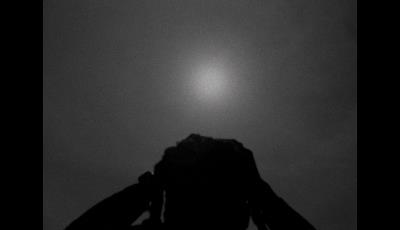
A total solar eclipse traverses three distinct cities, uniting them in a fleeting moment of shared darkness. Filmed on Super 8 and 16mm, the rich textures of black-and-white and color cinematography capture the profound stillness that descends upon these disparate communities. Through Kevin Jerome Everson’s singular vision, this cosmic event becomes a powerful meditation on solidarity, memory, and witnessing-asking how a momentary shadow might illuminate our deepest human connections. Presented as a single-channel projection on a large screen.
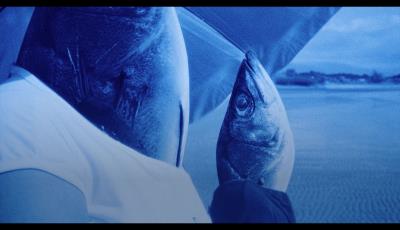
On a remote Philippine beach, a teenage girl’s confession of a near-drowning in childhood ripples through the silence between her and her mother. Though neither can swim, revisiting this memory triggers a haunting metamorphosis, turning them into sea creatures-part-human, part-fish-capable at last of navigating the depths of their past. Their intimate journey unfolds against the turbulent backdrop of the West Philippine Sea, where the testimonies of local fisherfolk-displaced by foreign encroachment and vanishing marine life-intertwine with their own. Installed as a single-channel monitor display within a room that recreates an underwater environment.
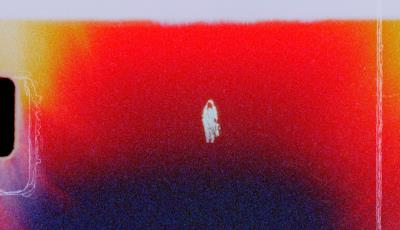
Passages unfolds as a meditative journey in three episodes, charting a course through ecological transformation, geological time, and ancient ritual. A coniferous forest ravaged by beetles; ancient trees petrified in volcanic ash; a luminous, otherworldly being performing within a Neolithic site aligned with the solar cycle-three distinct visions that converge into a singular, interconnected experience. Rendered without dialogue or narration, the film immerses the viewer in the fragile continuum between humanity and the vastness of deep time, between remembrance and forgetting, between life and decay. Presented as a three-channel installation with three monitors positioned side by side.
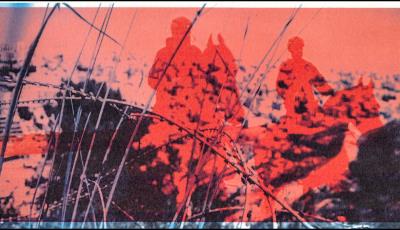
The camera’s unblinking gaze follows Horse No.7 through its rigorous training as a tool of crowd control for the Israeli police. This contemporary footage is interwoven with archival images of horses deployed during land seizures in the occupied West Bank, creating a haunting dialogue between past and present. Through an intensely layered soundscape and the repetitive, spectral choreography of horse and rider, the film lays bare the mechanics of state power. Without a single word spoken, The Cavalry becomes a chilling study of discipline, structural violence, and the body-both human and animal-as an instrument of control. Installed as a two-channel projection installation, including channels composed of several long-take shots.
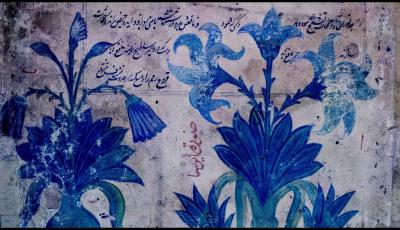
In Daria’s world, night-blooming gardens and the specter of serial crime mysteriously intertwine. This experimental film essay crafts a mesmerizing collage from archival Iranian cinema, lush botanical imagery, and sparse, poetic narration. Within this landscape, personal desire confronts patriarchal violence, and ecological metaphors illuminate the terrain of memory and gendered trauma. A lyrical meditation on the quiet resilience of love-a force that, like the titular flowers, insists on blooming even in the deepest darkness. Installed as a single-channel screen projection.
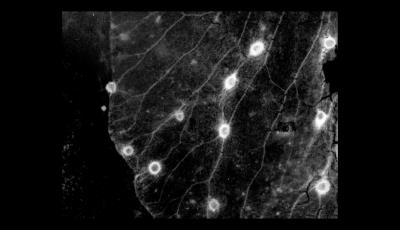
For the filmmaker, Chang Gyeong Palace transforms from a site of childhood fantasy into a haunted space where daily life blurs with spectral animal cries. Through overlapping visuals and hypnotic soundscape, the film exposes fissures between memory and trauma, colonization and liberation. Using manipulated film and analog projection, Chang Gyeong summons emotional residues embedded in place-its stones, soil, and layered presence-asking how space holds both public history and personal memory. A mixed-media installation combining 16mm film loops, an apparatus for observing decaying leaves, and reference archival materials.
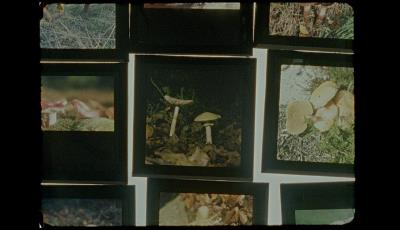
In 1845, Henry David Thoreau built a cabin in the woods. Inside, he placed three chairs: one for solitude, one for friendship, and one for society. Nearly two centuries later, this film enters that same space-not to replicate the past, but to build a 'shadow-forest' in its place. Here, the three chairs are gone. In their stead, stand three tables. A mixed-media installation work combining diverse media including film, slides, and overhead projections.
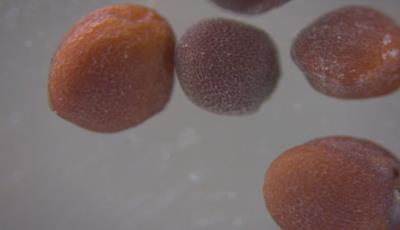
We begin to sense the vitality of a being only when its size resembles our own-when we can recognize its organs, its structure. In the hands of a farmer, however, a seed is not merely a unit, but a living entity, each bearing its own singularity. This quiet recognition of individuality echoes in the Korean phrase “to receive seeds” (ssi-at-eul bat-da), a term that carries a dual meaning. On the surface, it speaks of labor, of turning seasons, of a life shaped by repetition. But looked at differently-from within that life-it becomes a phrase of creation. It speaks not of labor, but of embodiment; not of repetition, but of existence itself taking root. The work is presented as a screen projection of Sigapsi 1, featuring close-up footage of seeds, and a monitor projection of Sigapsi 2, documenting farmers. These are accompanied by a seed storage box containing native seeds and drawings that map out preservation routes and genealogies of the seeds.
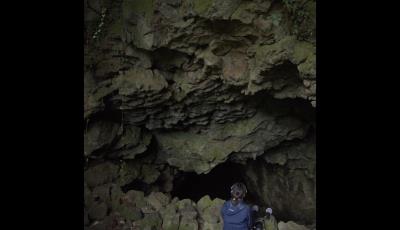
Can memories that were never recorded be awakened-through the senses of the body, through the cracks in the landscape? In the caves of Jeju Island, history lies hidden yet echoing: a subterranean archive where suppressed traumas and forgotten lives resurface. A visitor enters this space, not to excavate, but to listen. Lowering the body, attuning the senses, they feel the texture of time through a gaze that reaches beyond the human. Installed as a multi-channel setup combining 2-channel video with 3-channel sound.
